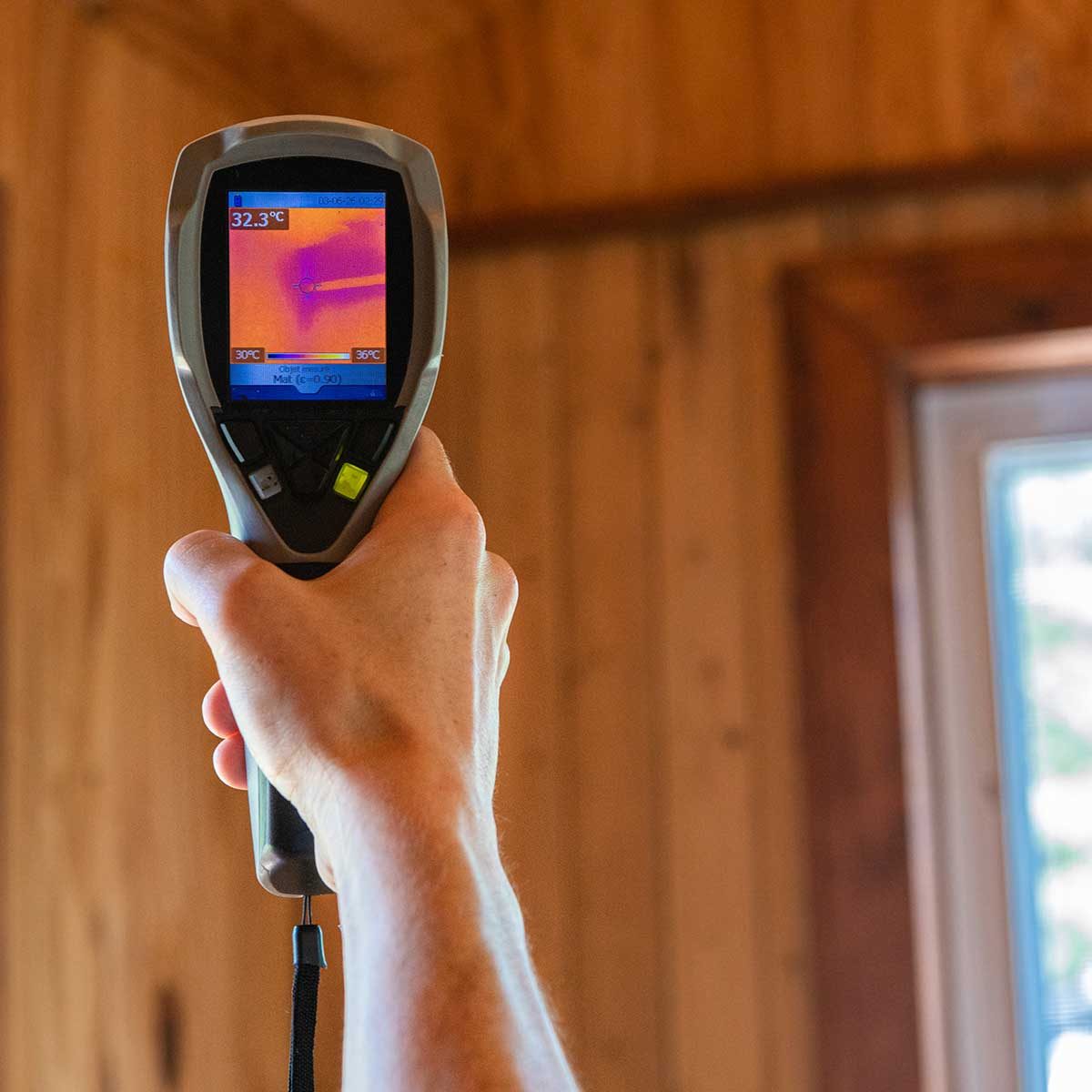An indoor air quality monitor can detect dangerous gases, chemicals and particulates in your home. Find out how they work and if one is right for you.

Should You Have Air Quality Monitors in Your Home?

According to the World Health Organization, a staggering 3.8 million deaths each year are caused by indoor air pollution. While many pollutants, such as kerosene or smoke from wood-burning stoves, are more common in developing nations, radon, volatile organic compounds (VOCs) and mold and mildew are universal indoor air quality hazards.
Because of these concerns, and because people are spending so much more time indoors thanks to the coronavirus pandemic, many homeowners are turning to air quality monitors.
On This Page
What Is an Air Quality Monitor?
An indoor air quality monitor is a device that measures indoor air quality (IAQ) by detecting the presence of gases and particulates — microscopic solid and liquid particles — that may be hazardous. Typically, air quality monitors will measure for radon, carbon dioxide, VOCs and other harmful chemicals and gases, as well as airborne dust, pollen and mold.
Whether you need an indoor air quality monitor depends on a few factors, says Dr. John McKeon, CEO and founder of Allergy Standards Ltd. “Some people, particularly those with respiratory or other relevant medical conditions, could benefit from having a device which will keep them informed,” he says. But, he adds, people in homes with proven IAQ and those not bothered by indoor allergens need not rush out and buy a monitor.
How Does an Air Quality Monitor Work?
Air quality monitors are fitted with multiple sensors made to detect different types of pollutants.
An electrochemical sensor detects oxygen levels and the presence of toxic gas by reducing it through an electrode and measuring its concentration. Particle detectors find dust, pollen and mold by way of a laser that shines through the air inside the sensor.
Based on the strength and array of the beam, the monitor can determine the concentration of particulates in the home. The monitor displays current air conditions in the indoor space. Some have color-coded or numbered systems to indicate danger levels.
What Do Air Quality Monitors Detect?
Indoor air quality monitors measure for a range of different hazards, depending on the monitor. These usually include carbon dioxide, carbon monoxide and radon. They also measure VOCs, which can come from building materials like plywood and particleboard, and also from fuels, cleaning solutions, paint and various other common household items.
Air quality monitors with particulate sensors can detect the concentration of particulates and tell you whether they’re at hazardous levels. But they can’t tell you what the particles are. They can’t distinguish between mold, pollen, dust mites or pet dander. Most monitors also read oxygen levels in the indoor environment.
Features of Air Quality Monitors
Indoor air quality monitors are available in three types:
- Tabletop or floor models that measure the air around them and display a readout of current conditions.
- Wall- or ceiling-mounted “smart” air quality monitors that measure the air around them. These work with a smartphone app and send results or alerts to the homeowner.
- Portable, handheld monitors that users can carry from room to room. These have a display screen.
How To Choose the Best Air Quality Monitor for Your Home
When shopping for an indoor air quality monitor, McKeon says it’s important to know what you want to track. If you live in an area that’s at risk for radon gas, make sure you buy a monitor that checks for it — not all of them do. If you’ve got mold allergies, make sure your monitor measures humidity and particulates. If you live in an area that’s been hit by wildfires, choose a monitor that detects smoke, carbon monoxide and carbon dioxide.
Air Quality Monitor Installation, Use and Safety
Installing an indoor air quality monitor is as easy as plugging it in, or maybe downloading an app and connecting to the device that way. But there are other points to consider.
- They are monitors, not correctors. An air quality monitor will alert you to issues but won’t fix them. Solutions may be as simple as opening the windows more frequently, or as serious as radon gas or mold remediation.
- Unless you’ve got a smart monitor that sends you alerts, air quality monitors are only effective if you check their displays regularly.
- They only measure the air around them. Just because your monitor gives you a clean read-out in the living room doesn’t mean there isn’t a dangerous gas leak in the kitchen.
- They need to be calibrated from time-to-time, per the manufacturer’s guidelines and suggested schedule.
- Batteries die! If you have battery-operated monitors, replace the batteries regularly.




















